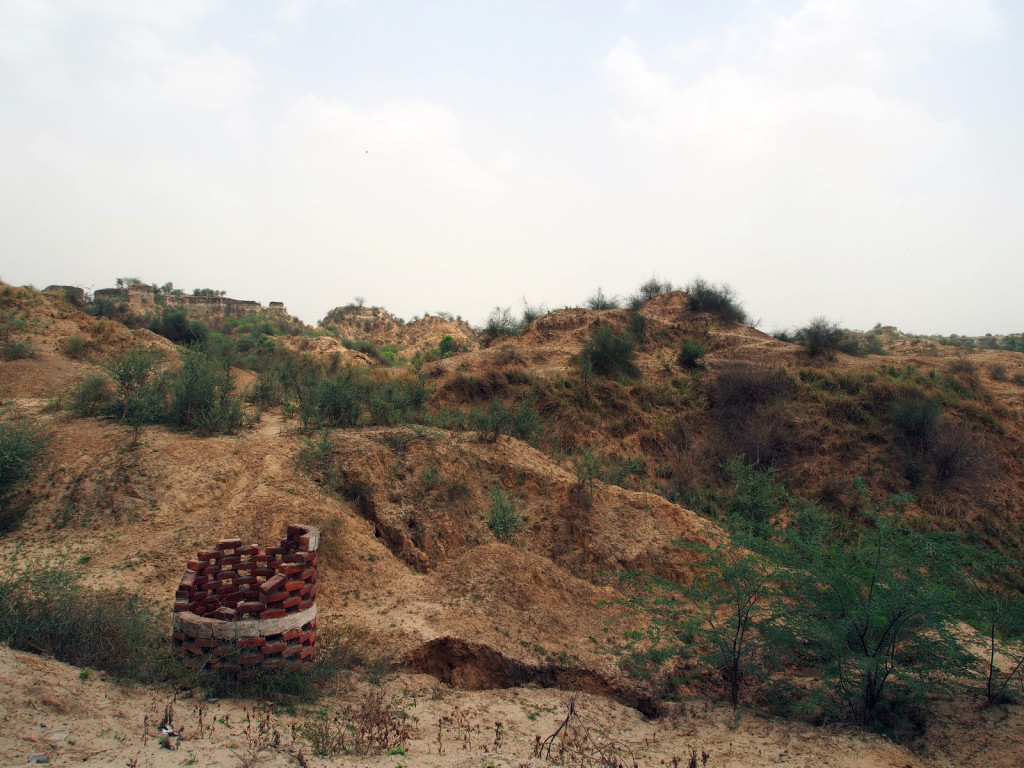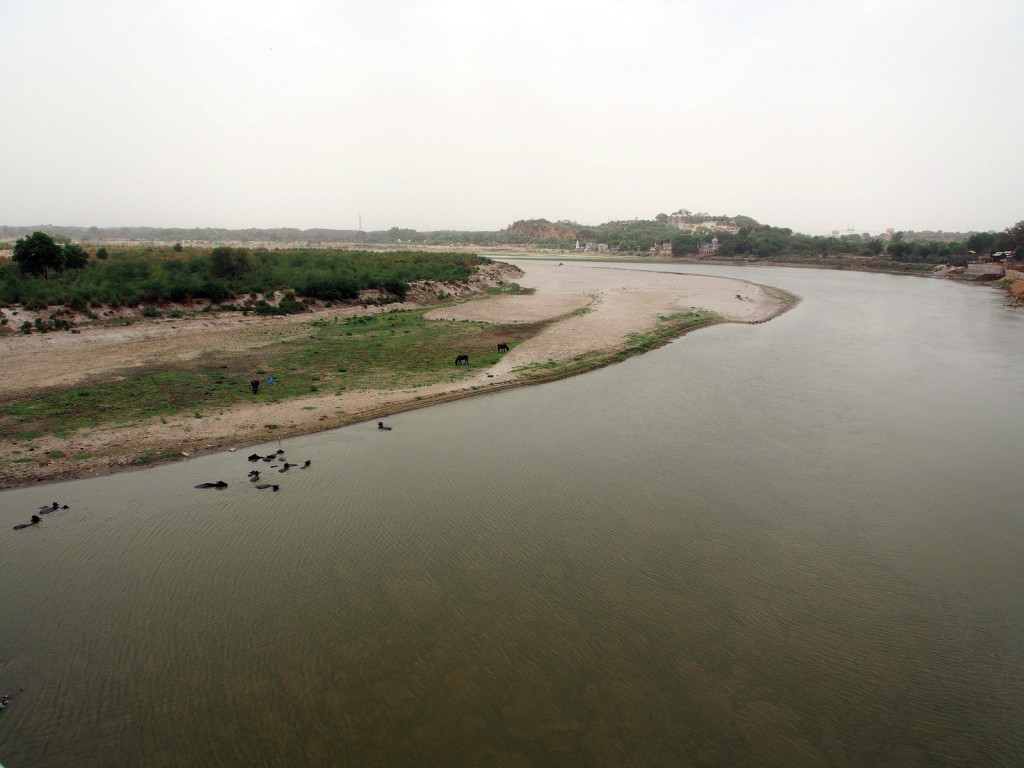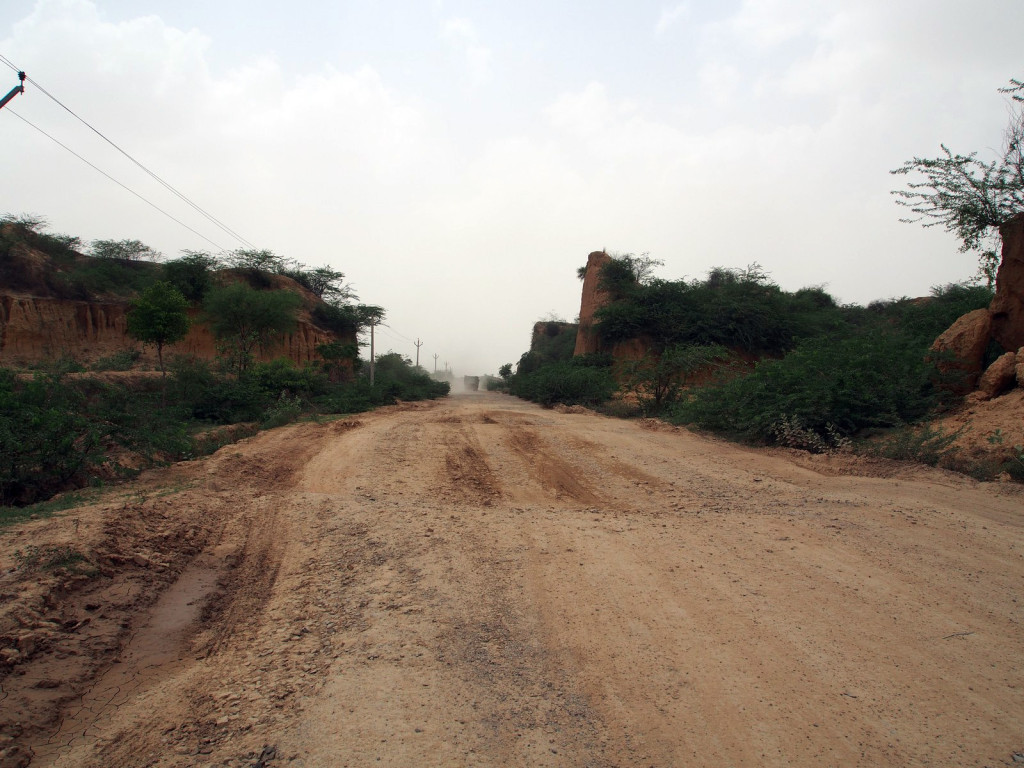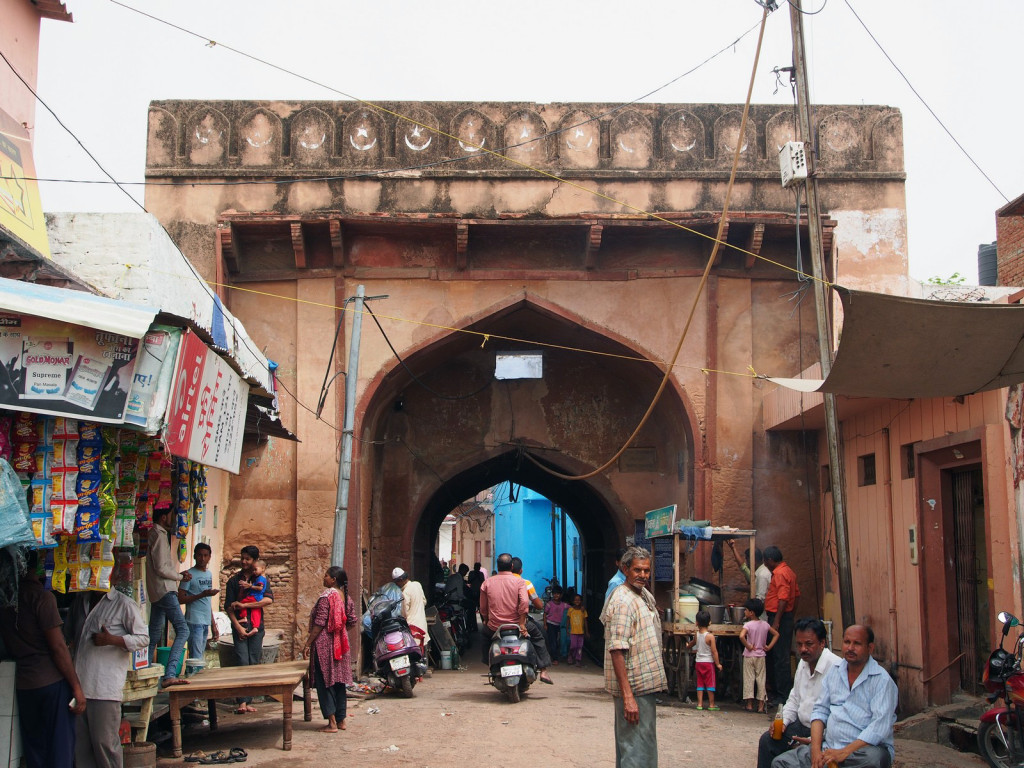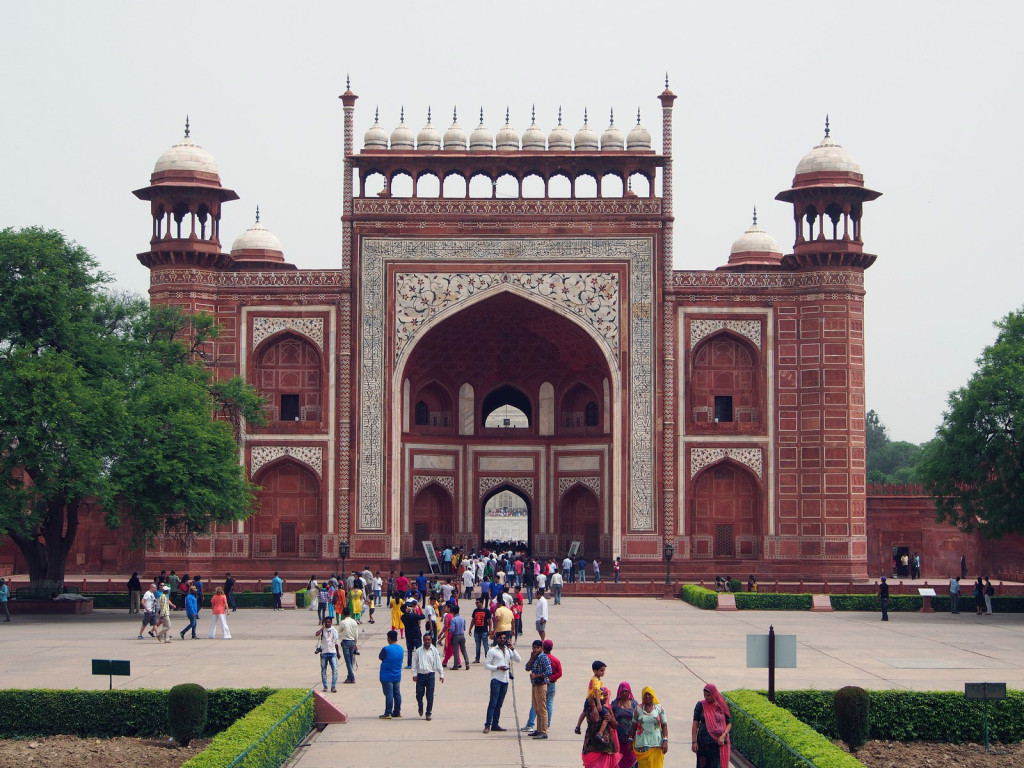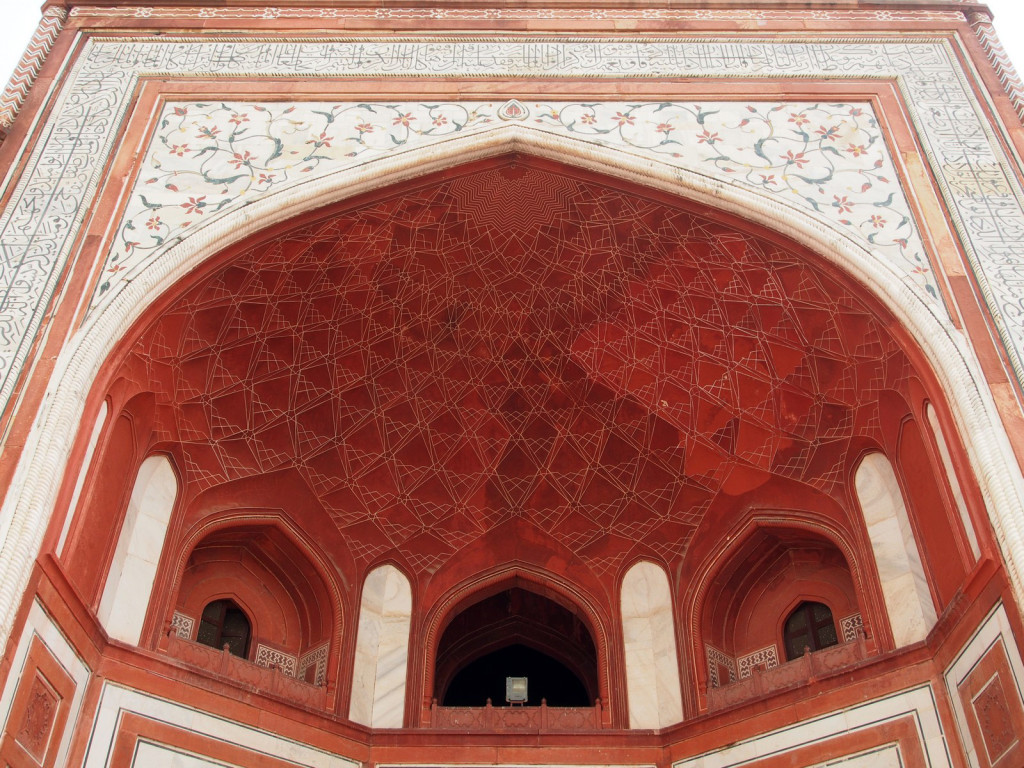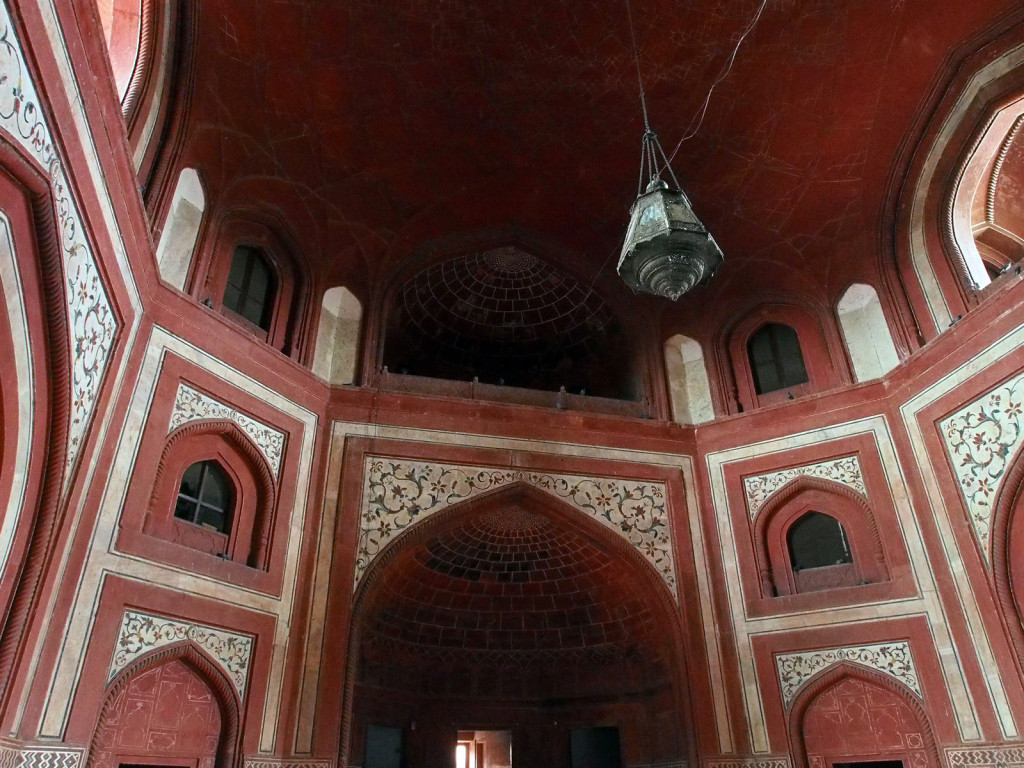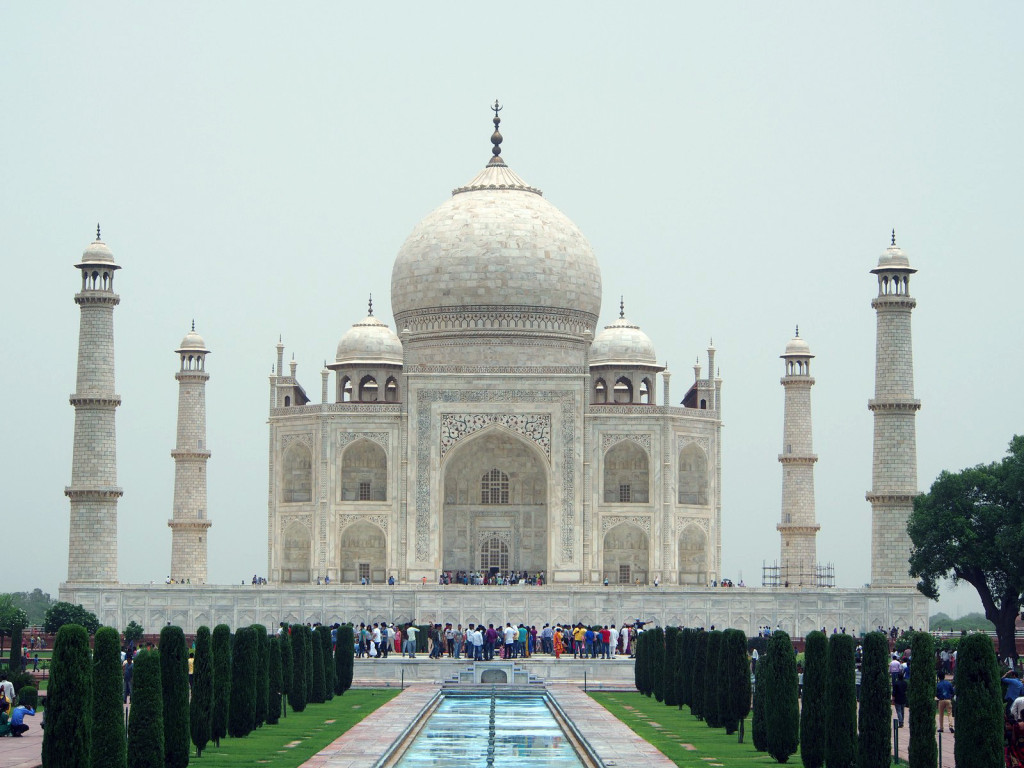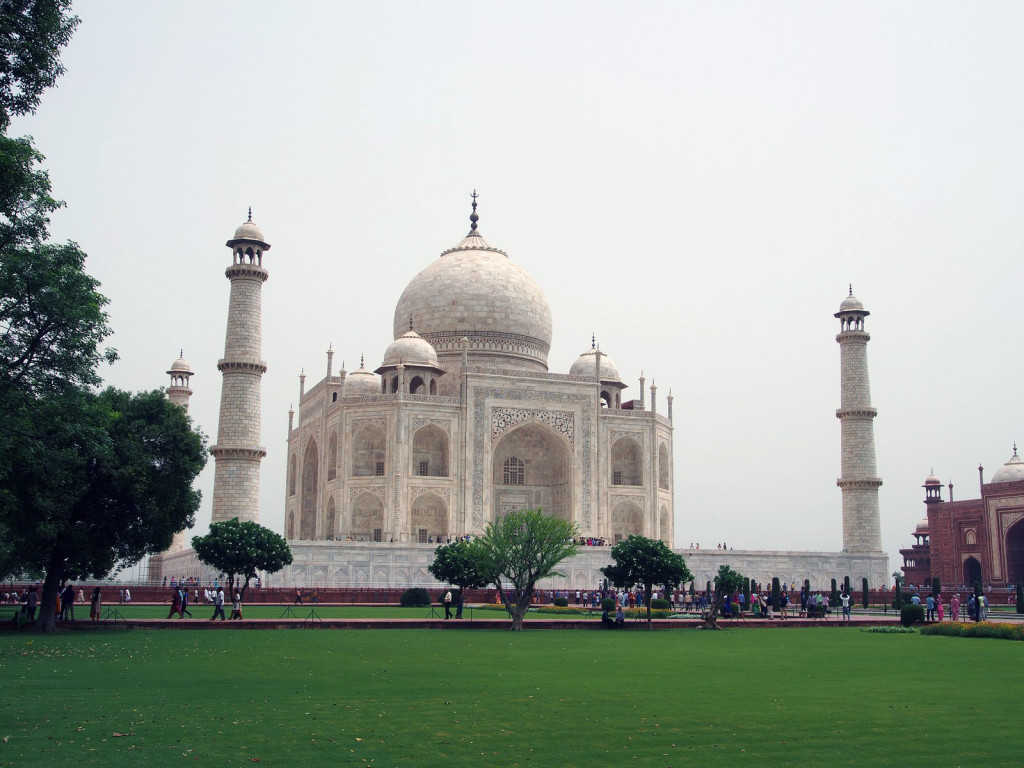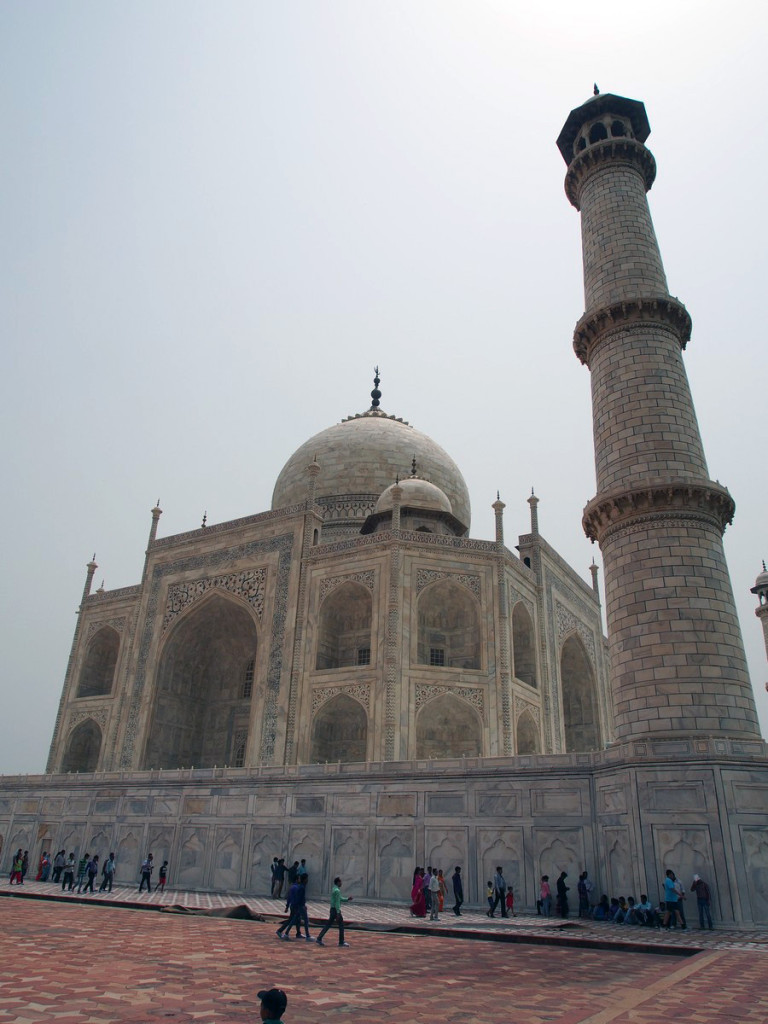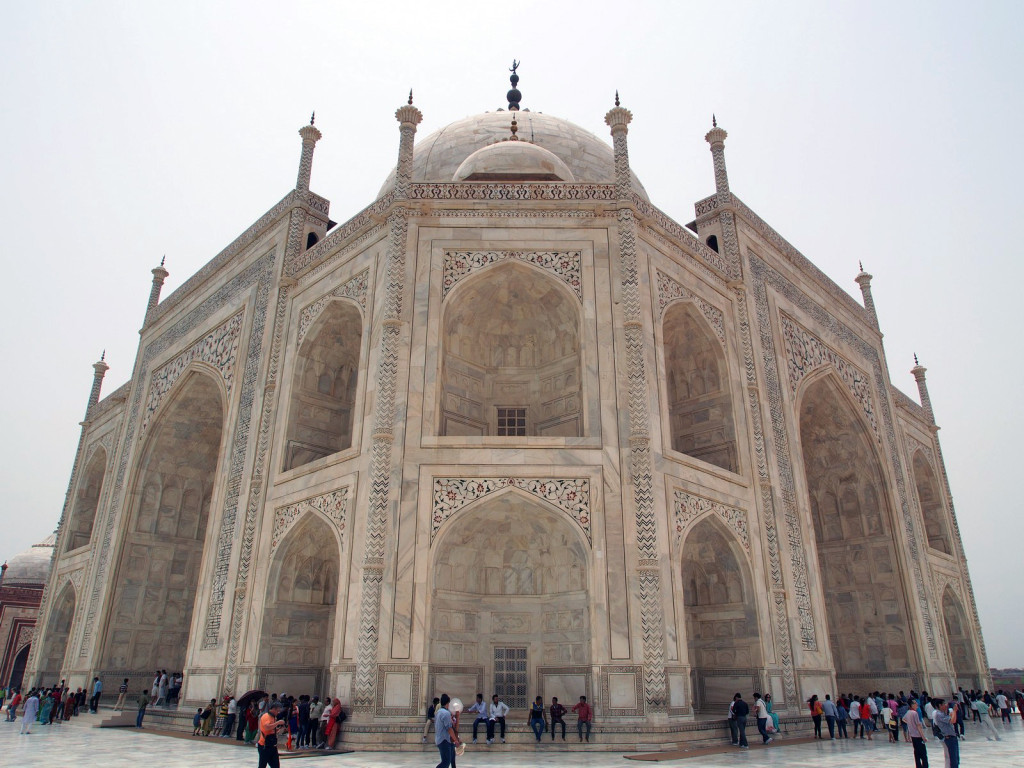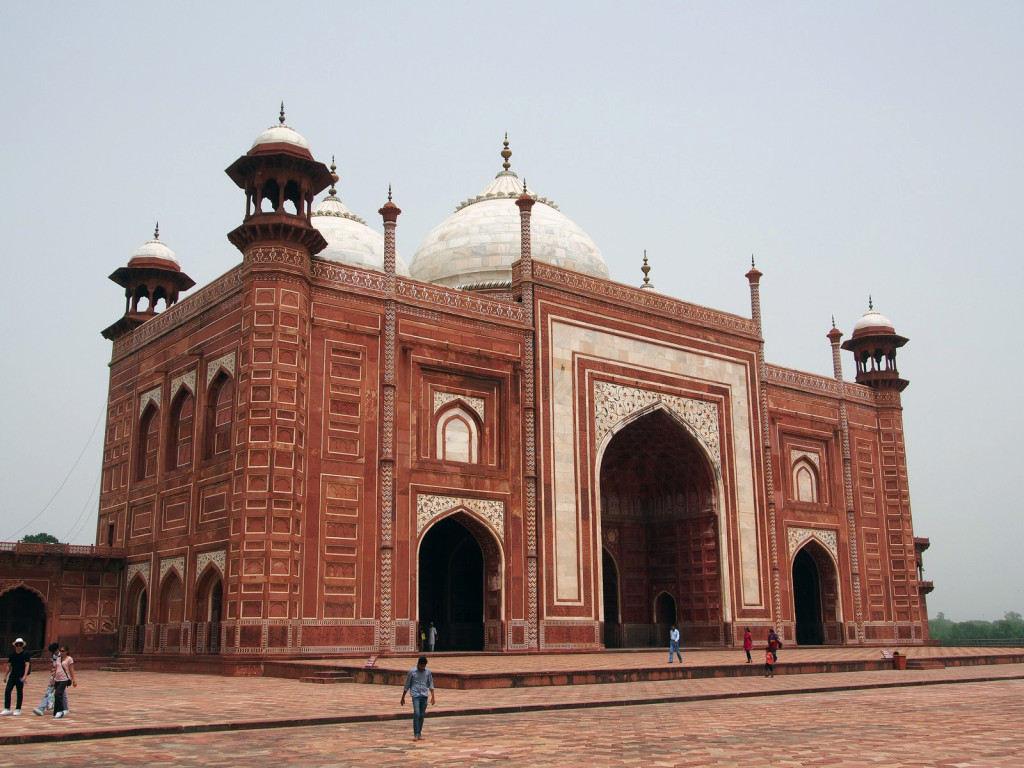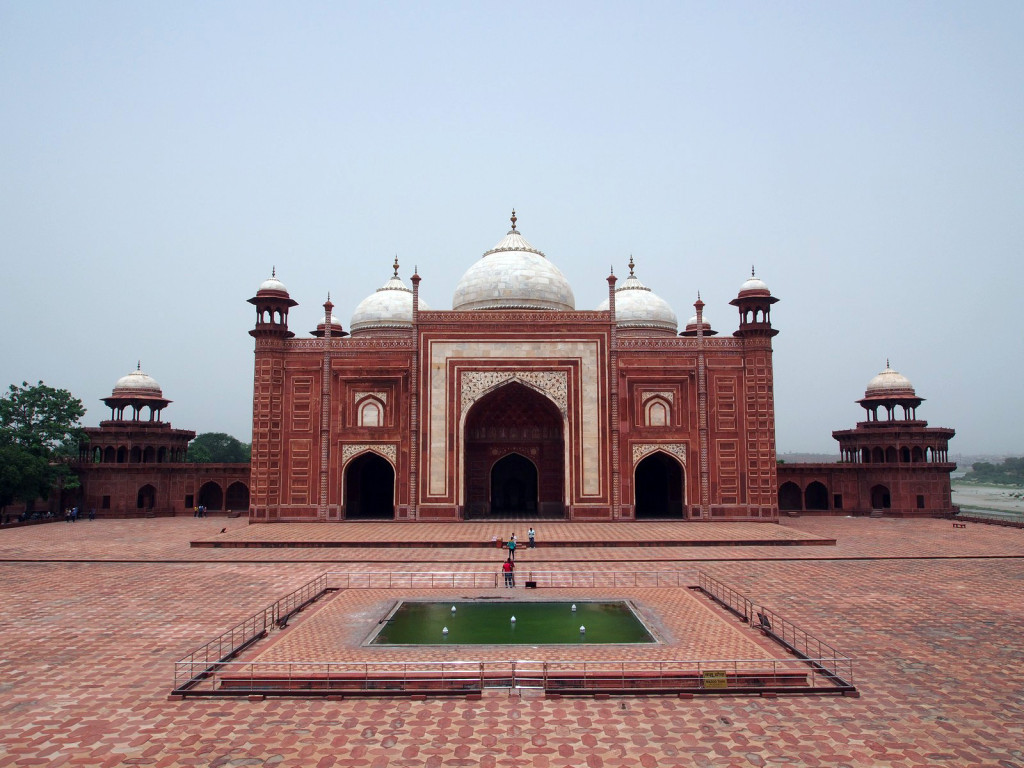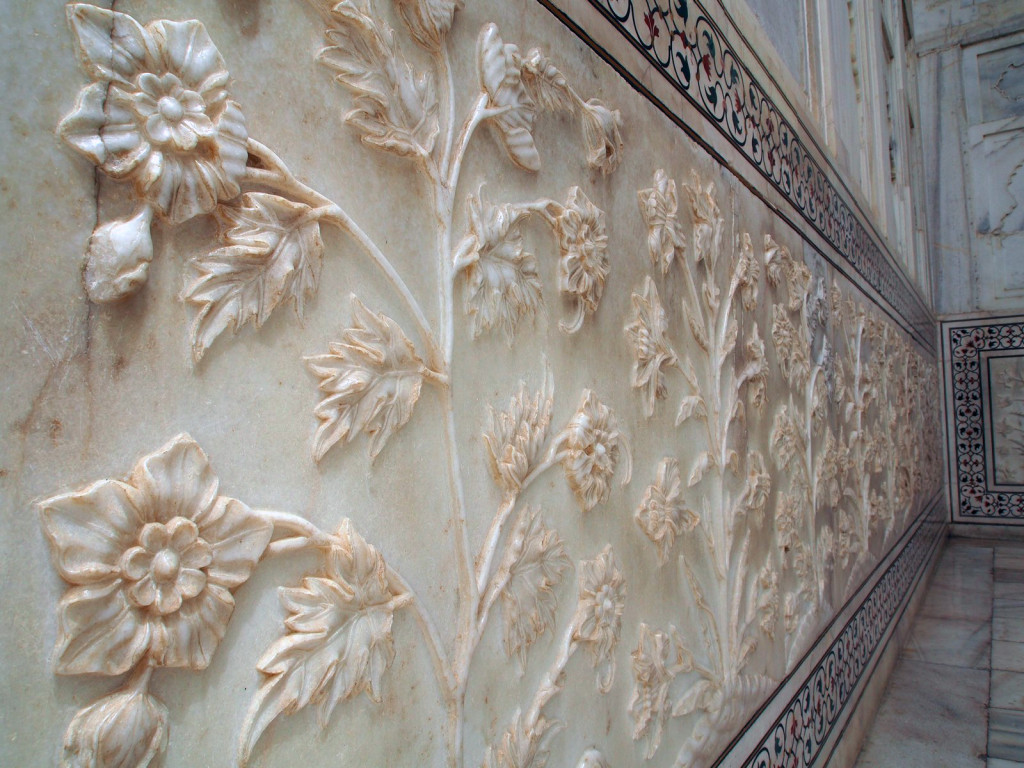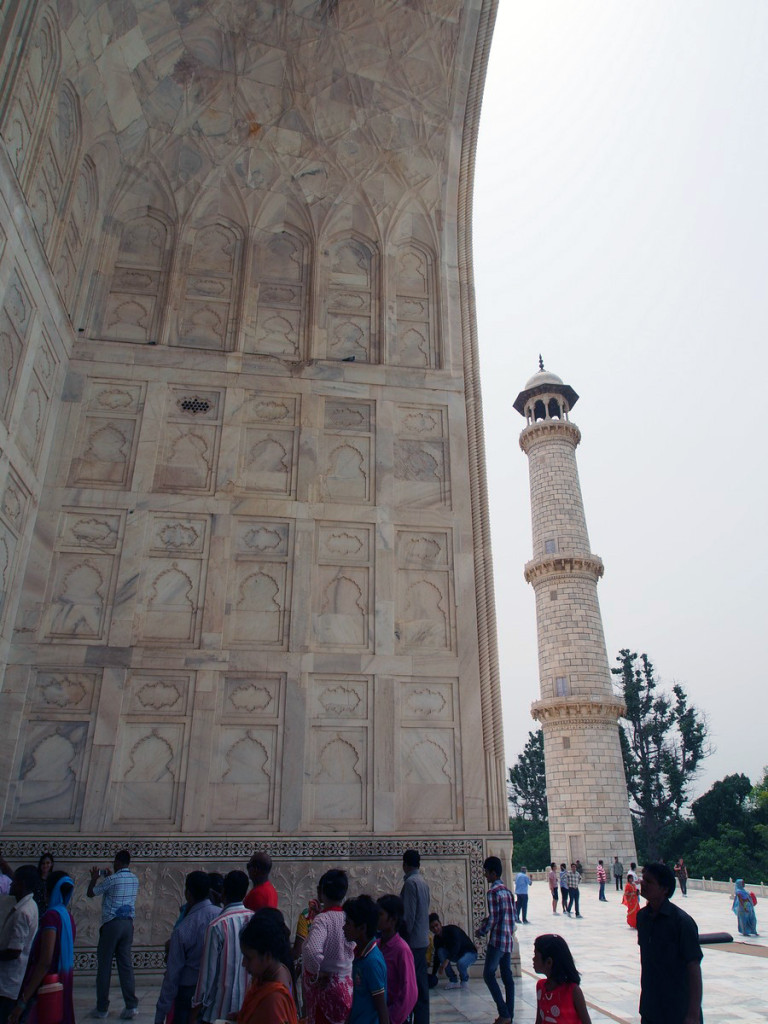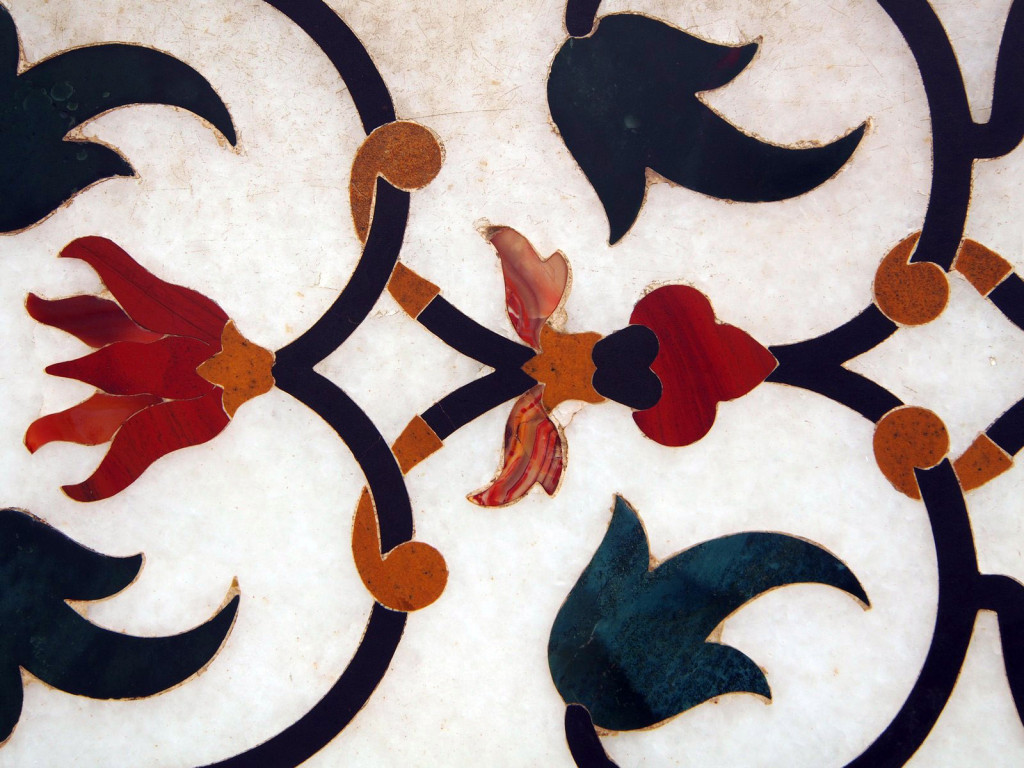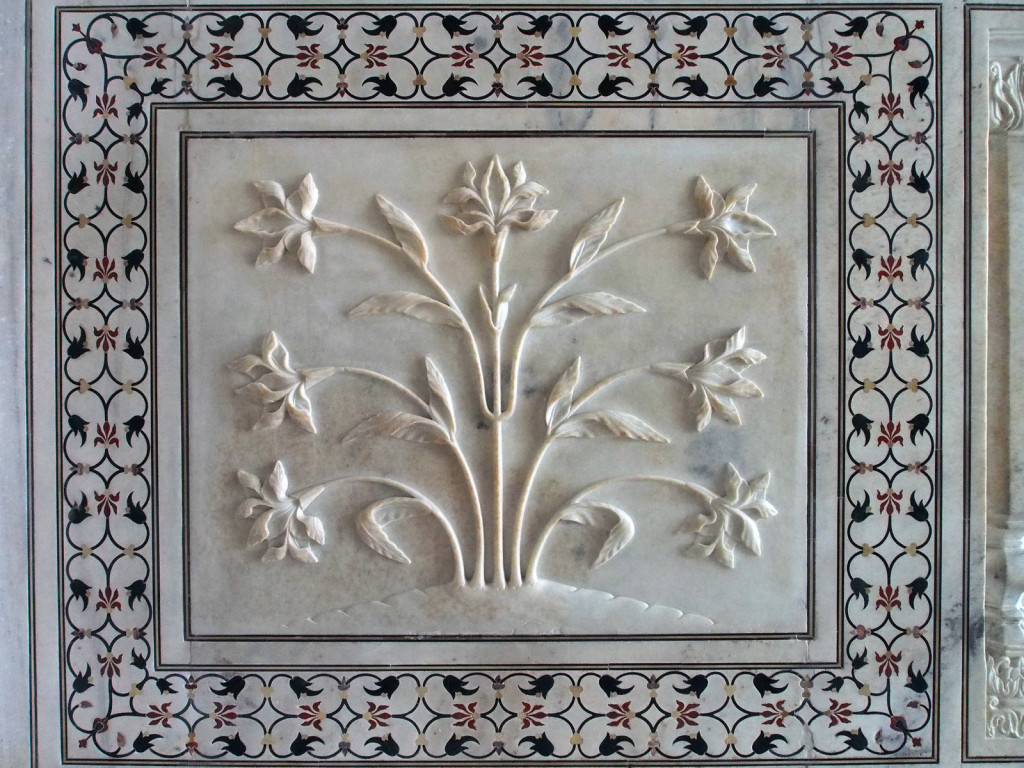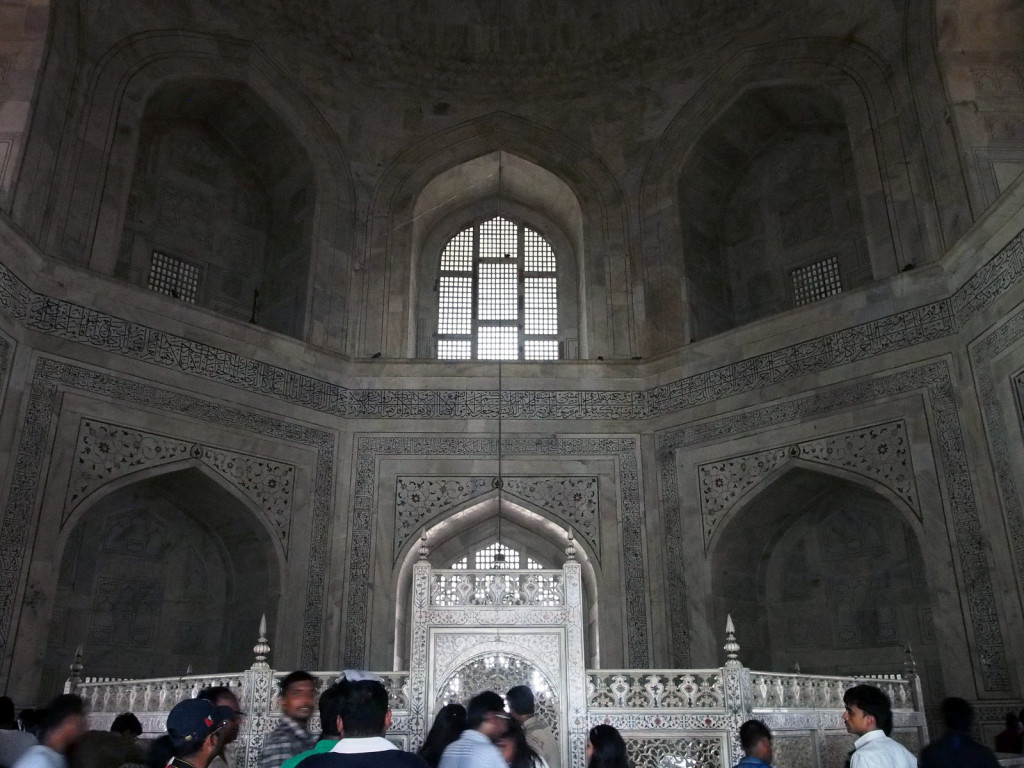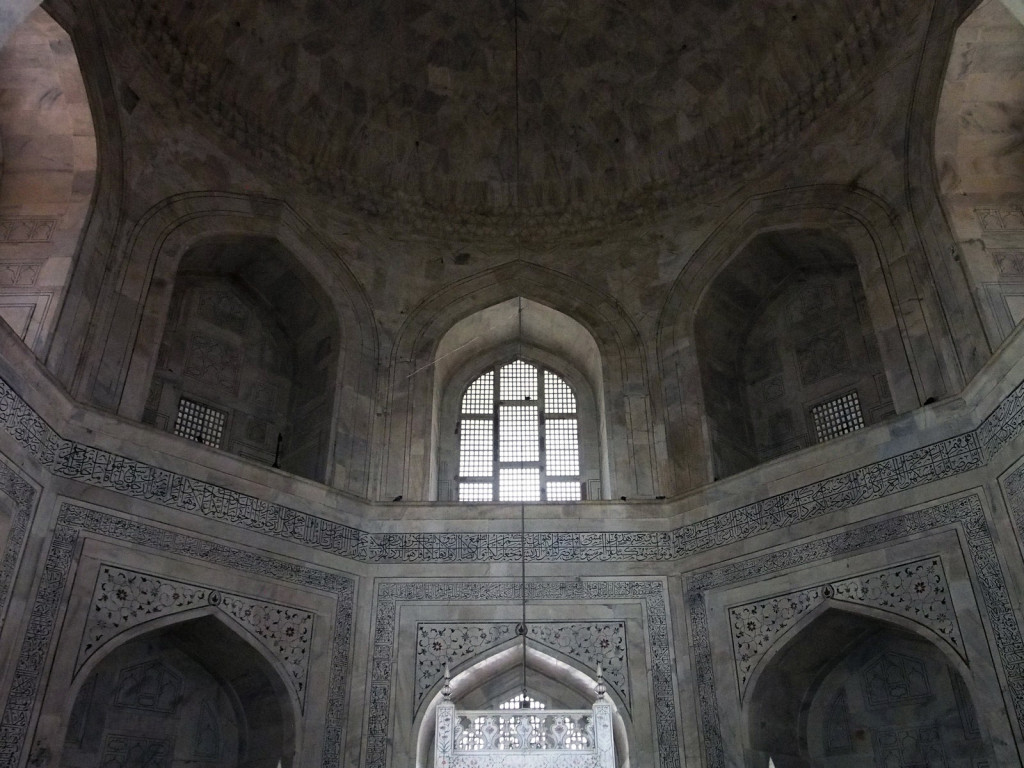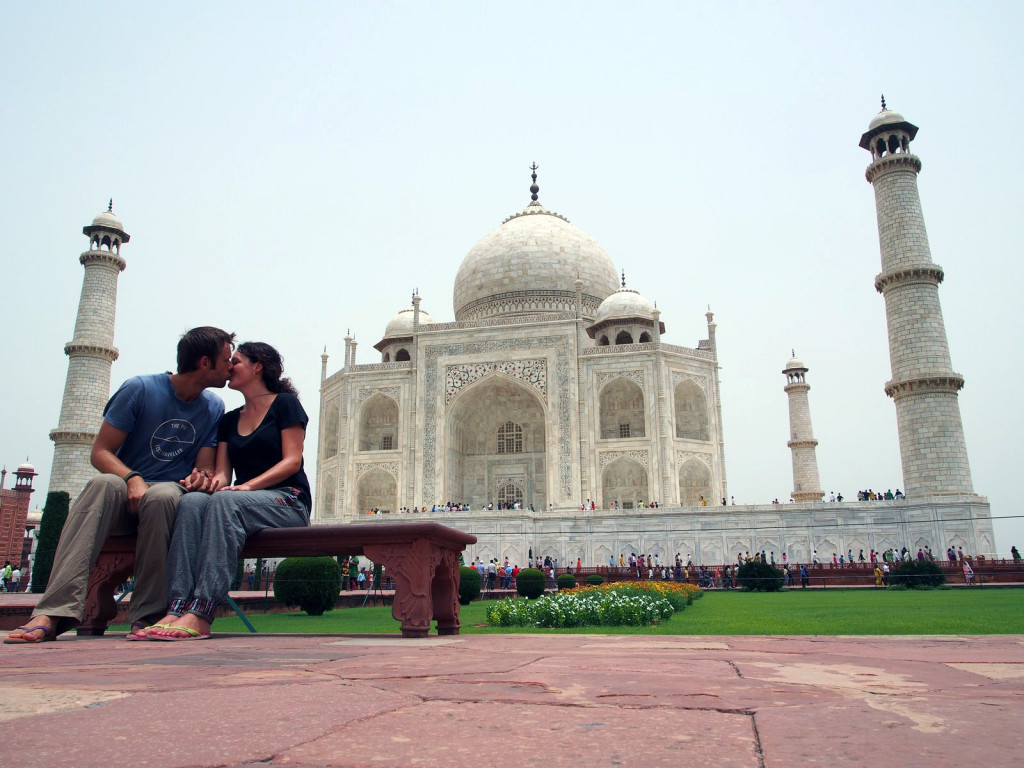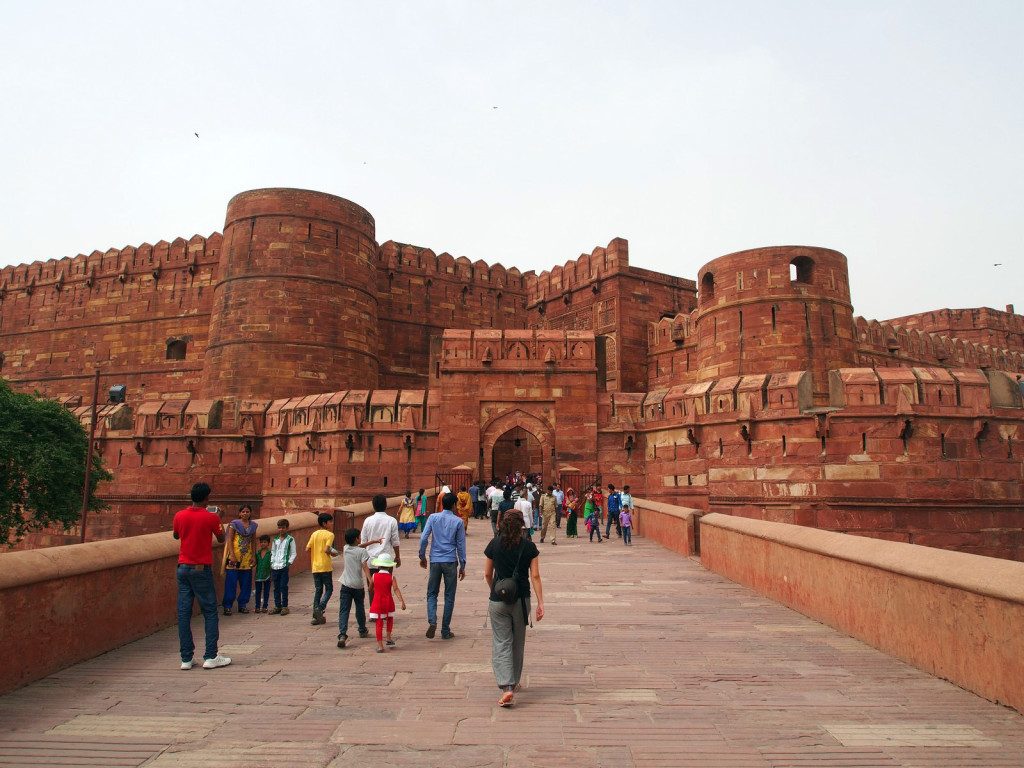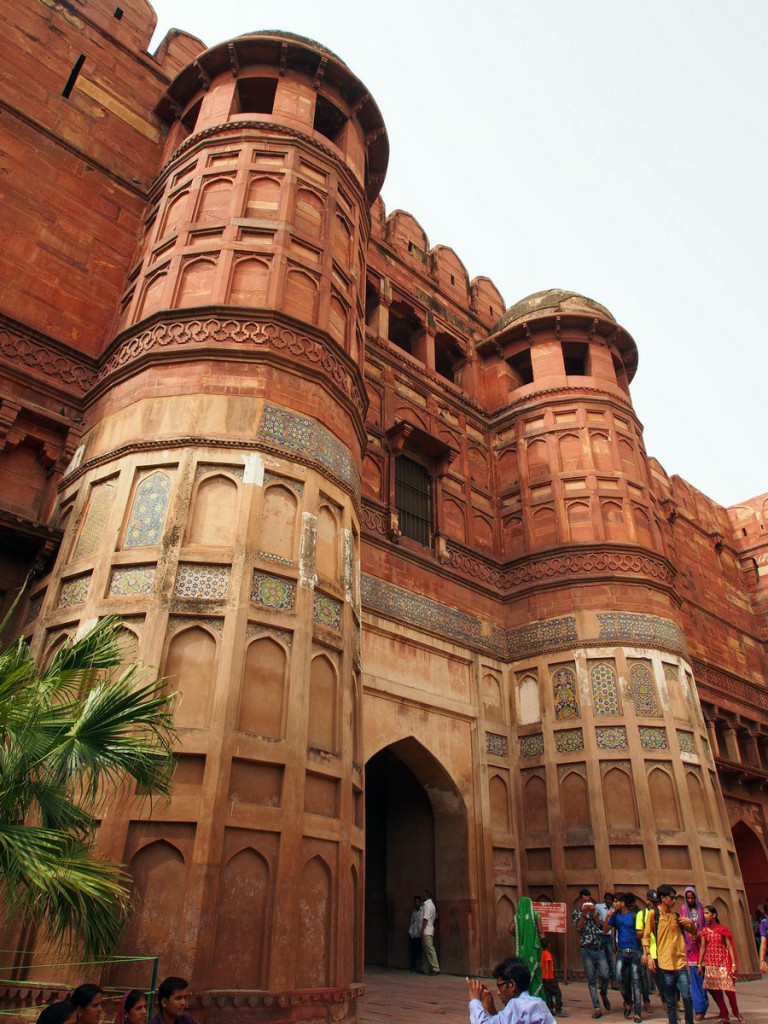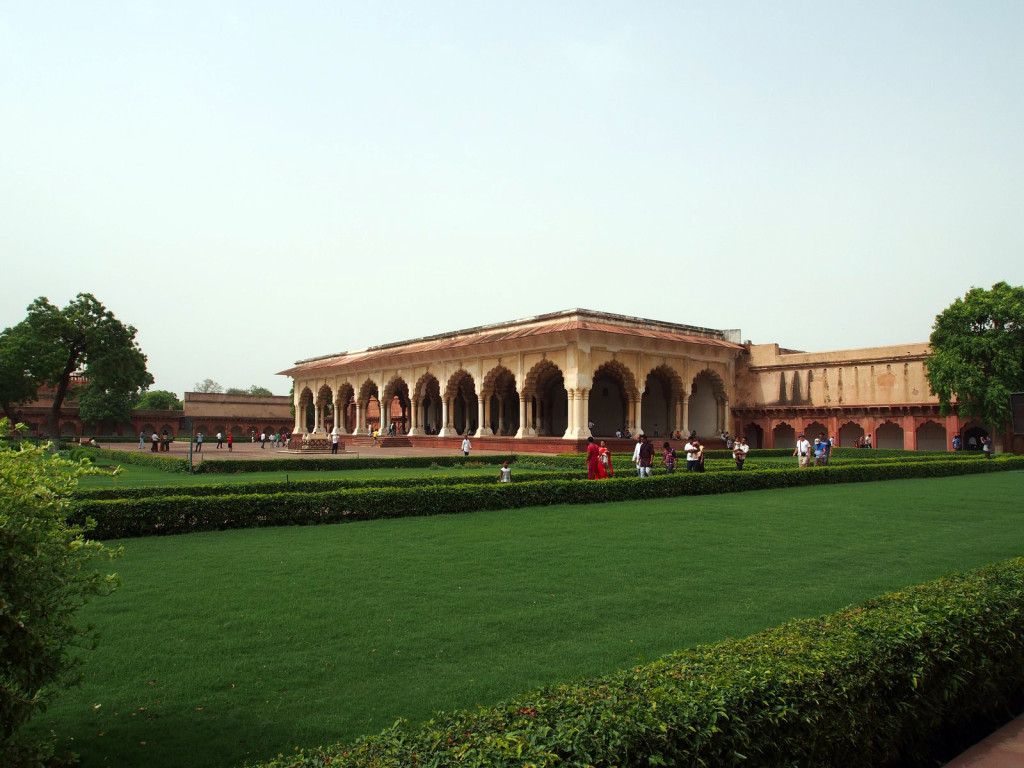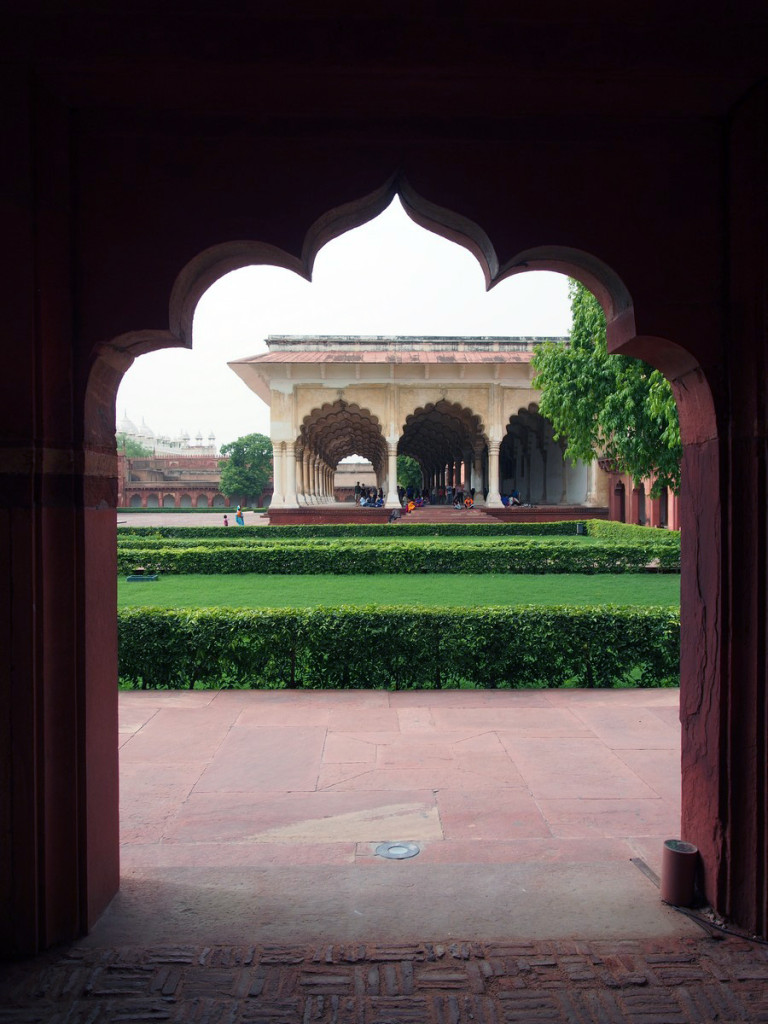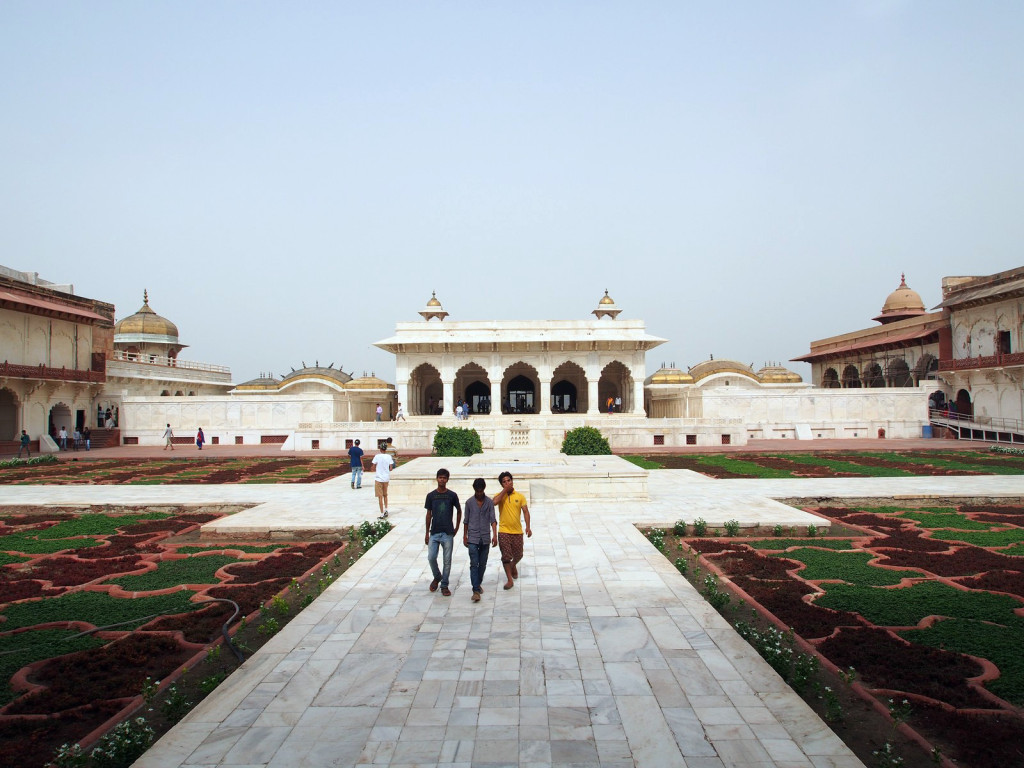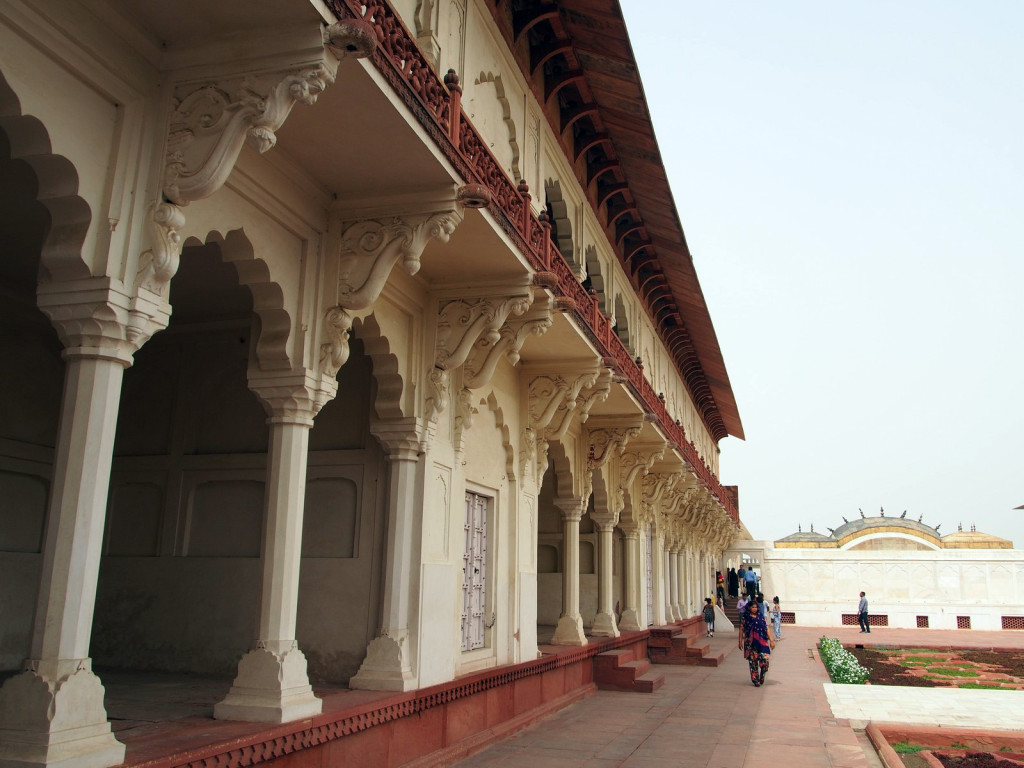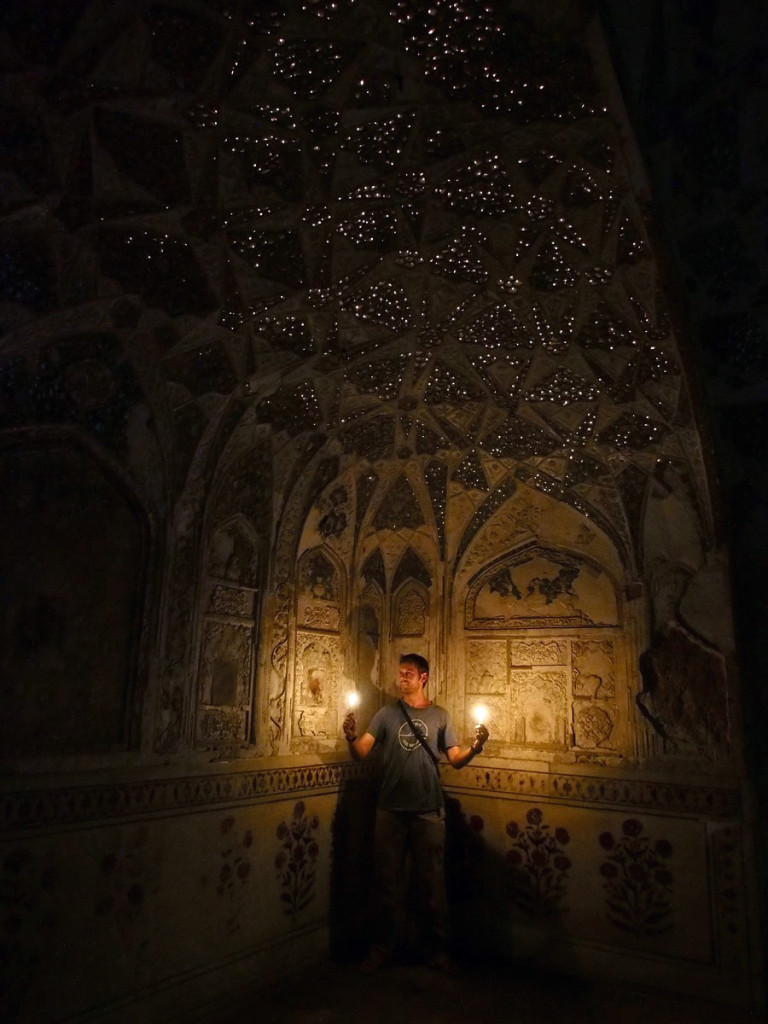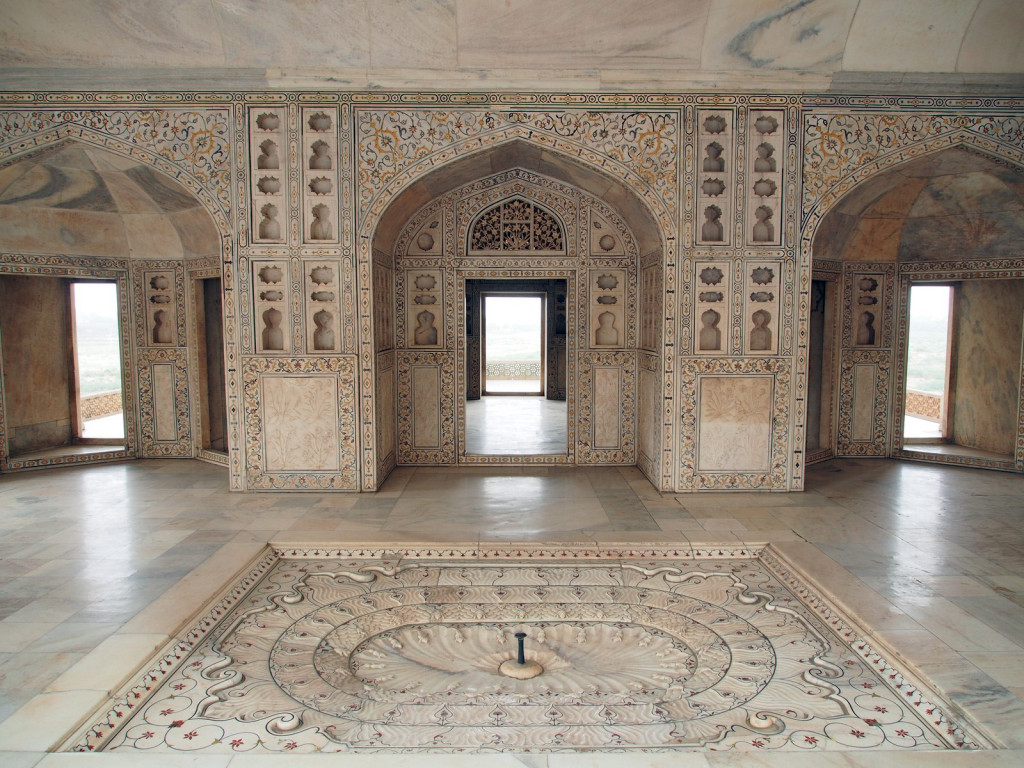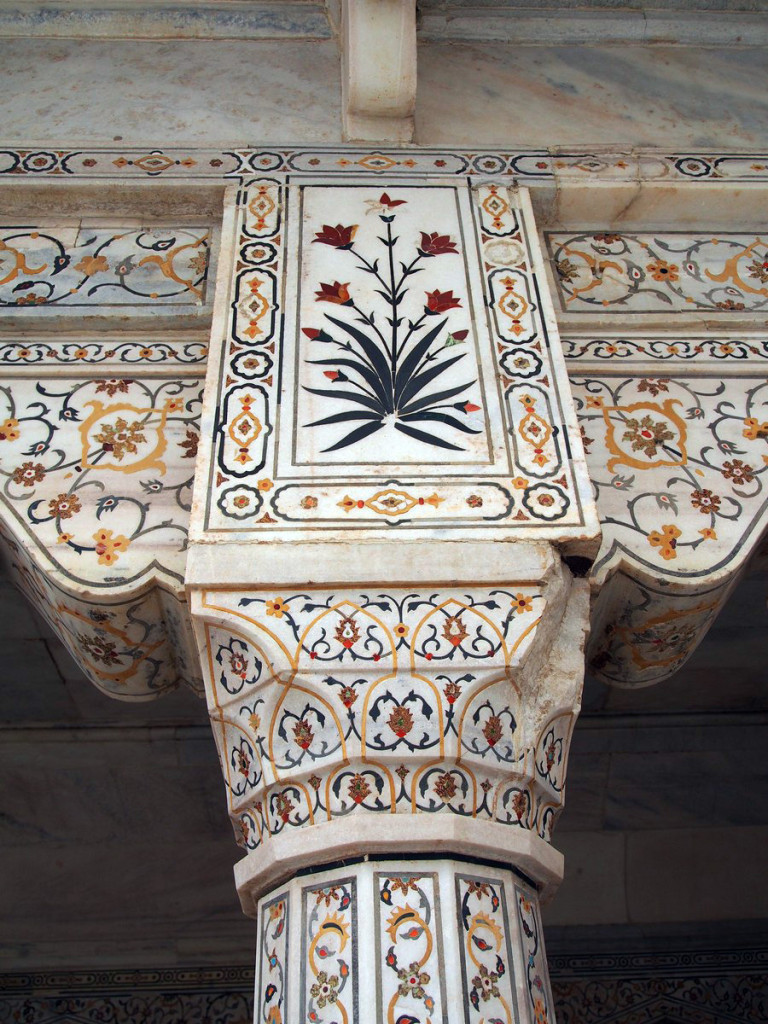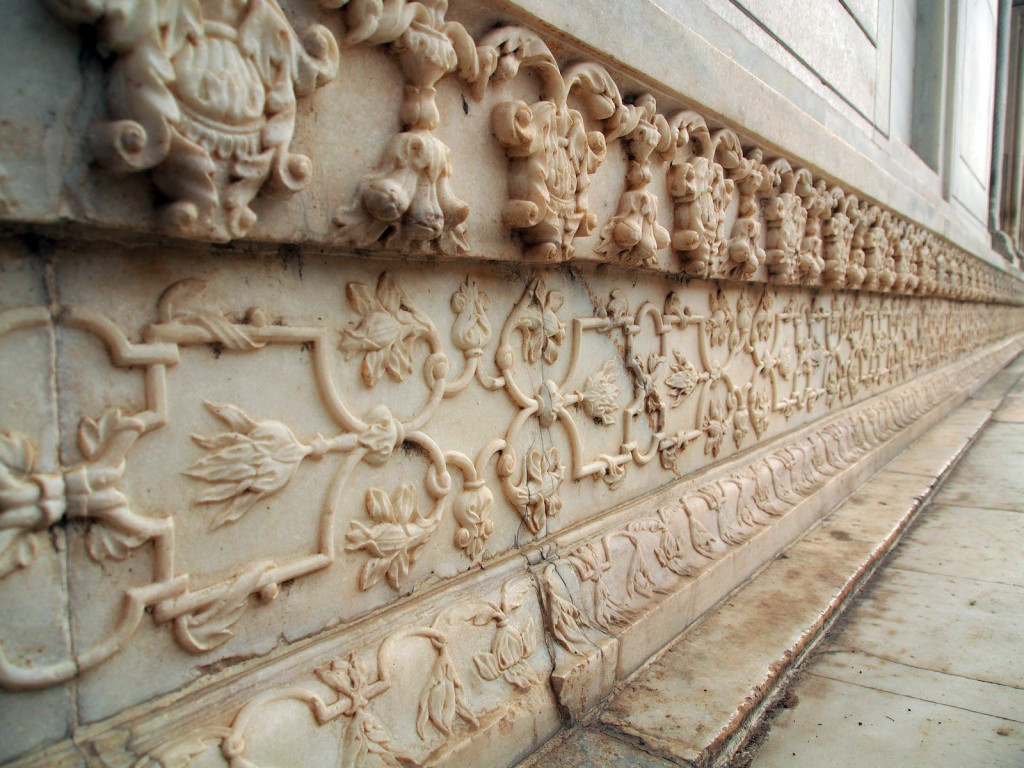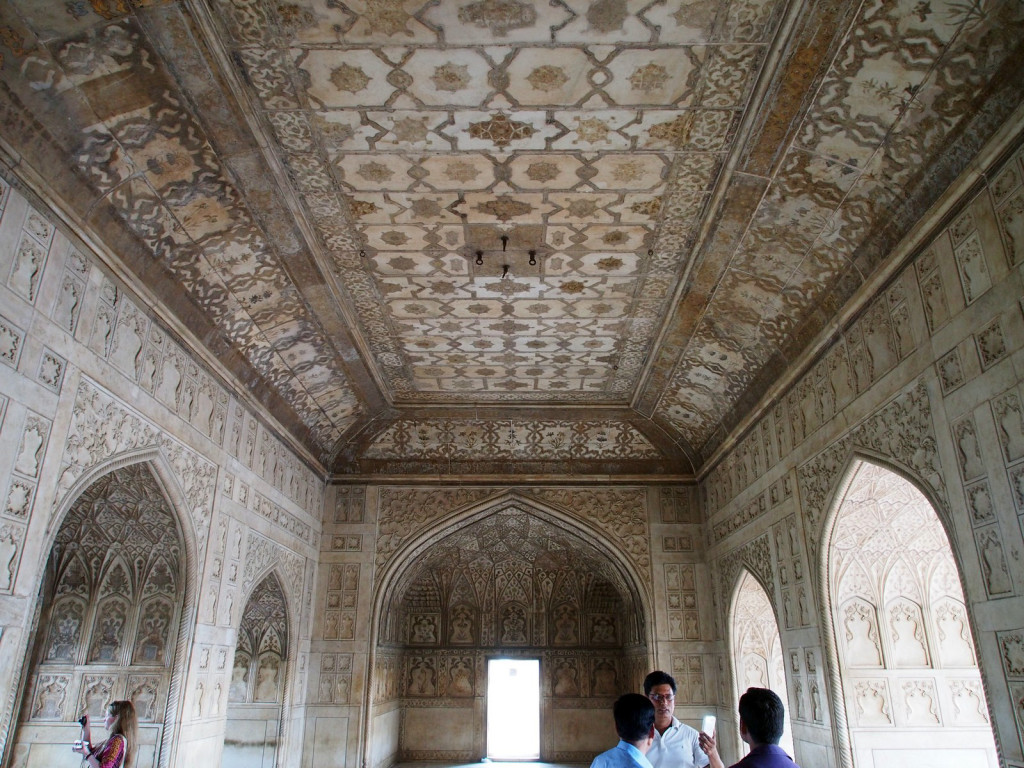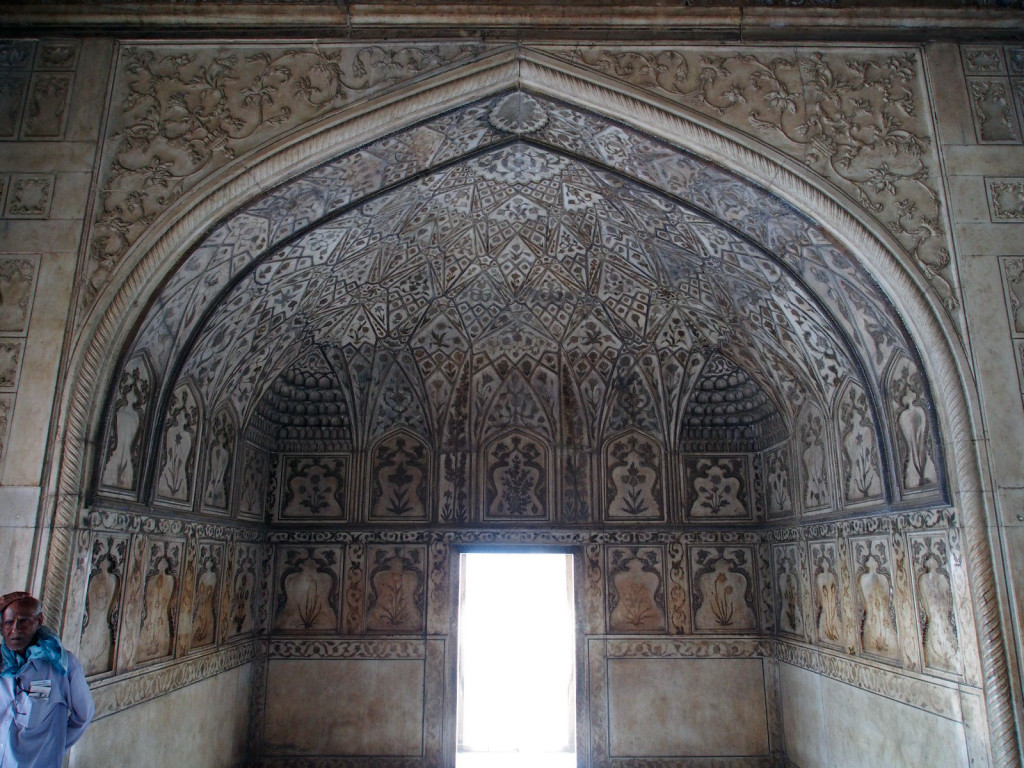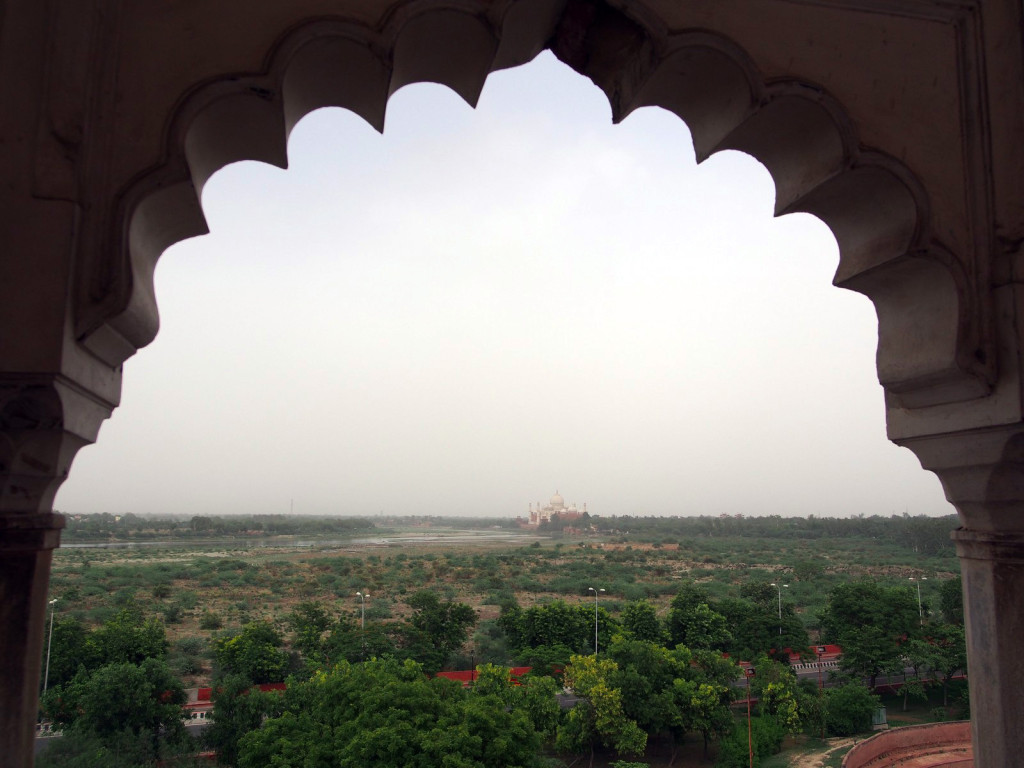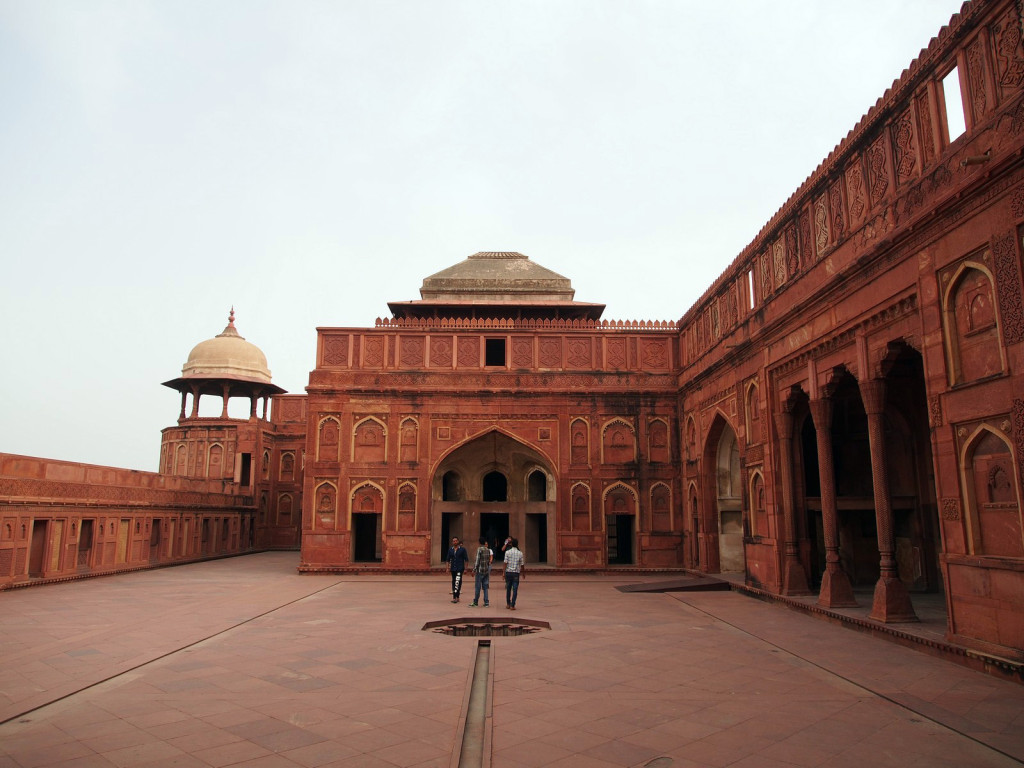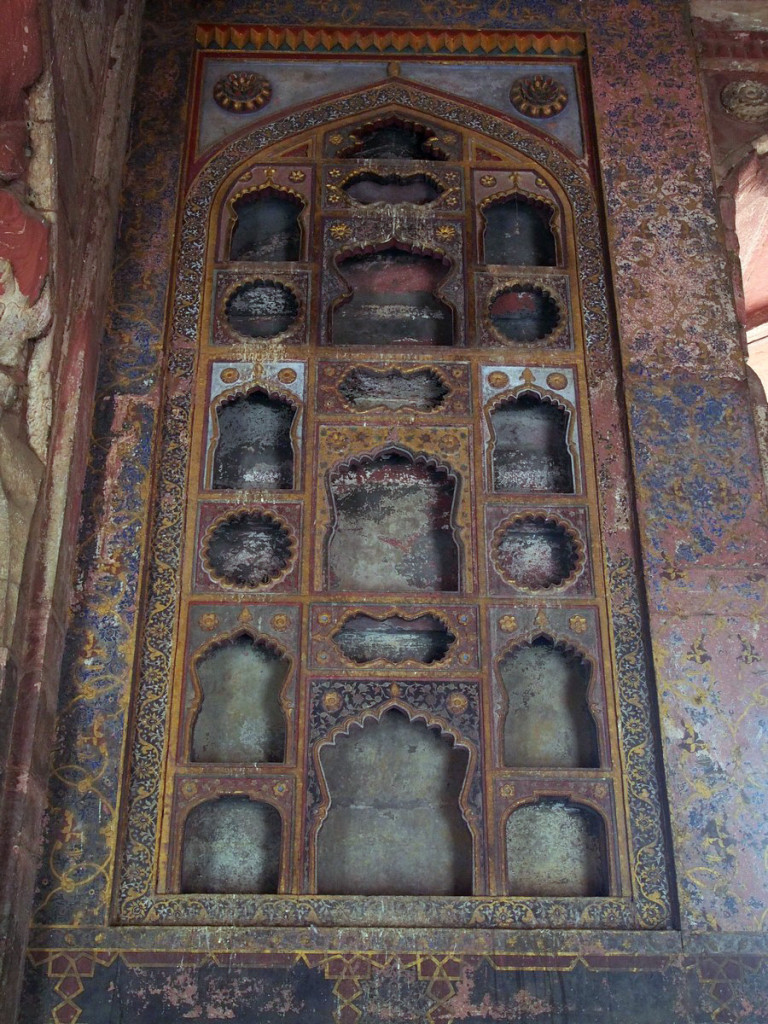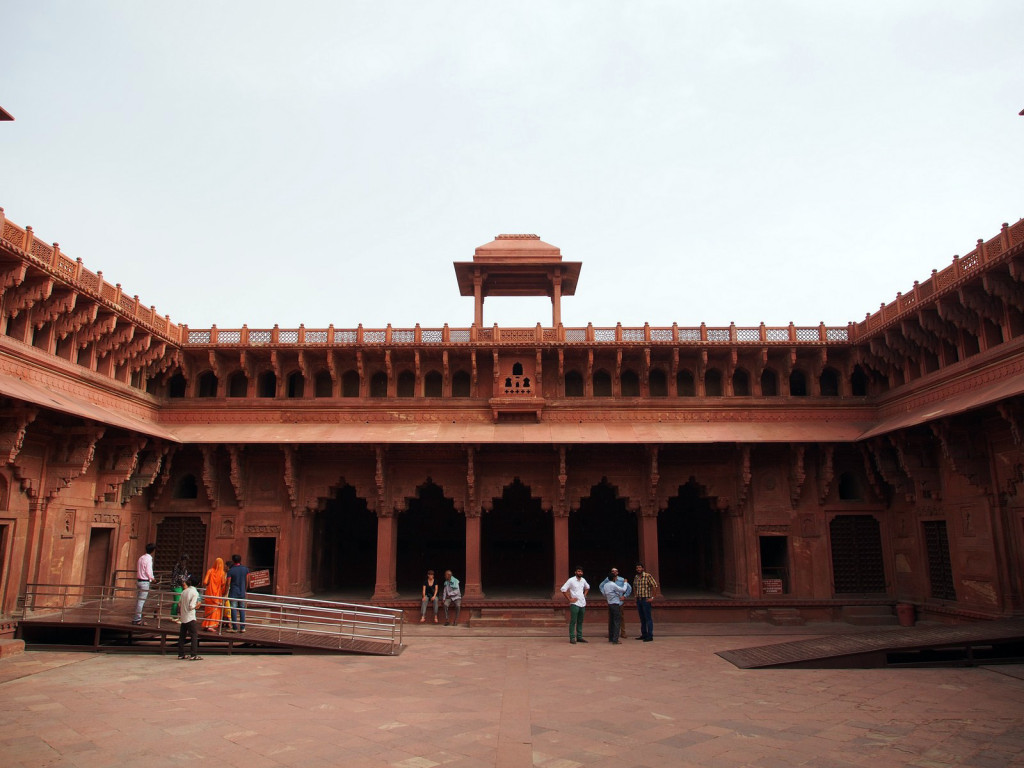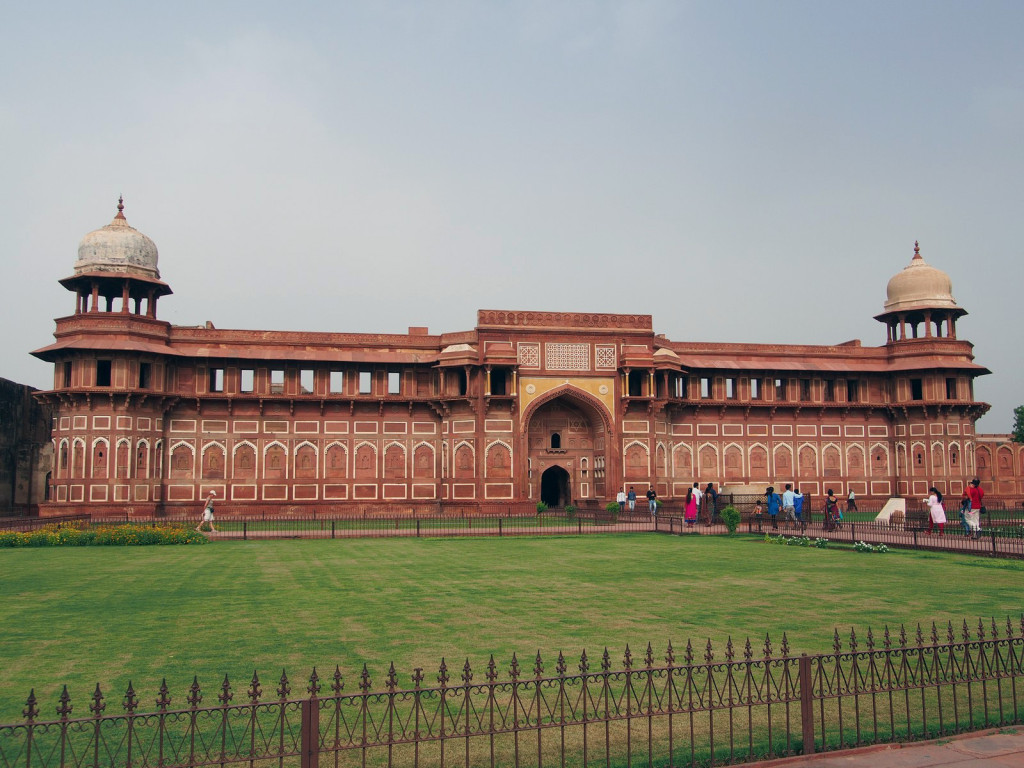Perhaps the title of this post should be “The Taj Mahal and Agra”, since the iconic building is far more famous than the town, its silhouette instantly recognizable across the world. Before we got there, however, we had to spend two days covering 600km through some of the most crowded and polluted parts of India. For the most part we gritted our teeth and stayed on the main highway, however near the end we had just had enough of it, and turned off onto minor back roads. More interesting scenery, with stretches of sand hills amongst the endless flat plains, but the road condition was much worse.
Finally we arrived in Agra, and went straight to the Taj Ganj – the backpacker ghetto just south of the Taj Mahal. We were lucky enough to find a hotel with safe parking and a rooftop restaurant with a view straight onto the Taj – drinking lemon tea and watching the sun set over one of the world’s most beautiful buildings is a great way to unwind after two days of hard riding.
Due to monsoon season and India’s relentless air pollution, there was a thick haze in the air that shrouded everything – it rendered the sunset dull and lifeless, so we forewent the sunrise the next morning too. After a surprisingly thorough security check at the entrance, we walked out into the first courtyard, with the Royal Gate hiding the Taj itself. Even on this secondary building, the level of detail in the finishes is stunning.
Then you walk out into the geometric, British-style gardens (a later addition), and it is presented in all its glory. Sadly the pools and fountains were dry, which lessened the overall effect a little. It’s fun to wander around and see all the different angles before approaching closely.
It is flanked on either side by a large, red sandstone mosque.
Up close, the detail in the finished is stunning. From the carvings in the marble, to the inlaid precious stones in floral patterns, to the screens carved from a single piece of marble, there’s always something new to draw the eye.
Built as a mausoleum for the Mughal emperor Shah Jahan’s wife, he was dethroned and imprisoned by his son in 1658, and he was eventually entombed here as well. Inside the main chamber are two fake sarcophagi – the real ones are in a much plainer chamber below.
We spent a little while longer on the way out, wandering the gardens and basking in the splendour.
With only a day in town, we spent the afternoon at the Agra Fort – although it has a lot of military features it was actually mostly used as a palace. The red sandstone was the favourite building material of the Mughals, with the white marble of the Taj Mahal an unusual exception.
After the ornate but still militaristic entrance and garrison, you arrive in the palace area – firstly the public assembly hall, where the emperor would make his pronouncements and sit in judgement.
Then on to the private areas of the palace.
We had hired a local guide to show us around the palace, and he told us of the Shish Mahal, or ‘Glass Palace’ – the queen’s private bathhouse, which is now closed to the public due to the risk of vandalism. Fortunately, our guide was an old hand who knew the staff, and arranged for us to be let in and shown around. The ceiling is decorated with a mosaic of convex mirrored glass imported from Syria, which reflects any light in a hundred different directions – the effect is impossible to capture in a still photo, and is stunning, even just with two small candles in lieu of dozens.
Just outside are the royal quarters, where Shah Jahan was imprisoned in the latter part of his life – overlooking the monument he built for his wife. As with the Taj Mahal, the intricate mosaic and marble carvings are beautiful.
Back to the red sandstone part of the palace, which was used as royal apartments for the emperor’s wives, their mothers, and his concubines.
Although there are plenty of other things to see and do in Agra we had to keep moving – riding an amazingly empty and well-maintained (albeit boring, but that’s not a bad thing for Indian roads) motorway north to Delhi.

